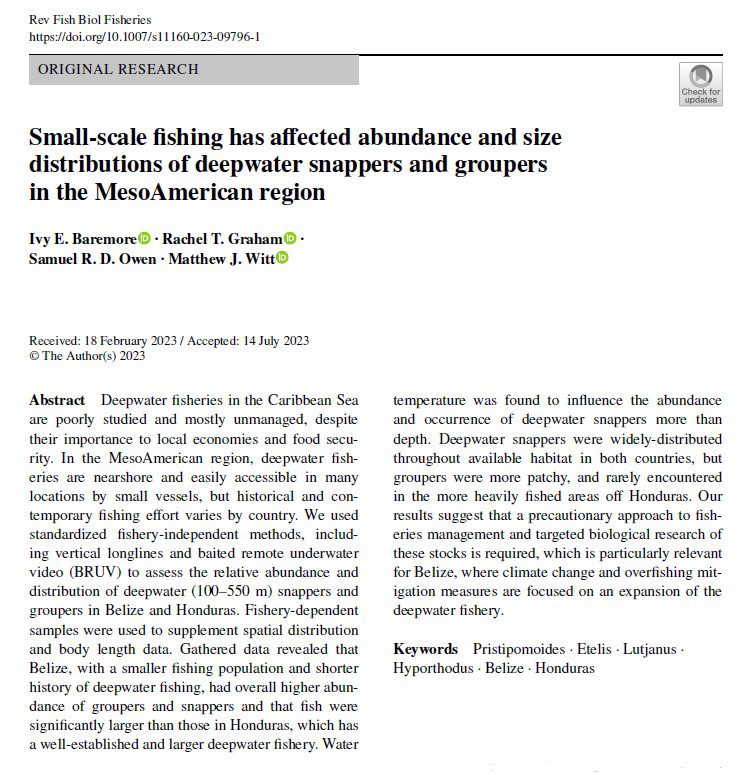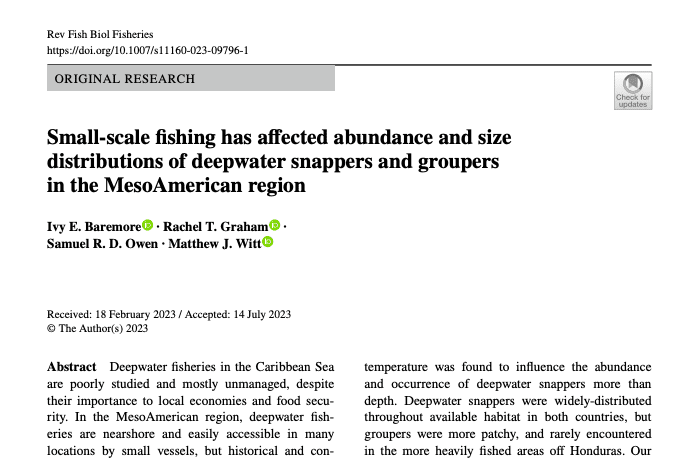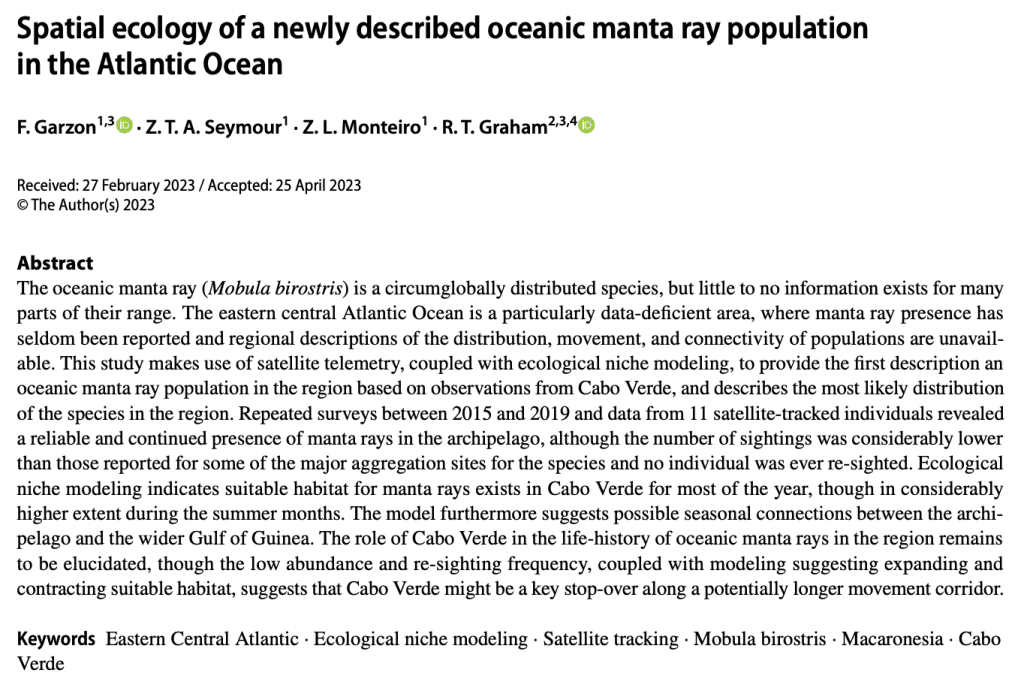Deepwater fisheries in the Caribbean waters of Mexico, Belize, Guatemala, and Honduras are currently un- managed, and there is very little monitoring of fishery landings. Increasing demand for high quality fish has led to the continued expansion of coastal fisheries into deeper waters in the region over several decades. The deepwater fisheries of the MesoAmerican Region are mostly small-scale, but they target species that are likely vulnerable to overexploitation due to conservative life history characteristics common to deepwater fish, including slow growth, late maturity, and low natural mortality. A total of 122 deepwater fishers from Mexico, Belize, Guatemala, and Honduras were interviewed to assess their perceptions on the status and future of deepwater fisheries, its history, current trends and prices. Deepwater fisheries in the region were mostly likely established in the 1970’s, though outside of Belize fishers reported a longer perceived timeline. Fishers in Mexico, Belize, and Honduras mostly targeted snapper species, including silk (Lutjanus vivanus), blackfin (L. buccanella), wenchman/cardinal snapper (Pristipomoides spp.), queen (Etelis oculatus), vermillion (Rhombo- plites aurorubens), and black (Apsilus dentatus) snappers while those in Guatemala targeted mainly sharks (mostly smoothhounds (Mustelus spp.), gulpers (Centrophorus spp.), sixgills (Hexanchus spp.), night sharks (Carcharhinus signatus), and dogfishes (Squalus spp.)) and groupers (mostly yellowedge (Hyporthodus flavolimbatus) and misty groupers (H. mystacinus)). Fishers largely sold directly to consumers, whether individuals, restaurants, or fish markets, and Honduras is currently the only country with a strong export market for deepwater fishes. As coastal fisheries continue to decline, and access to depth sounders and GPS becomes ubiquitous, fishing effort in these fisheries is expected to continue to increase.
Ivy E. Baremore a, c,*, Rachel T. Graham b, Matthew J. Witt cdirections for elasmobranch conservation.



